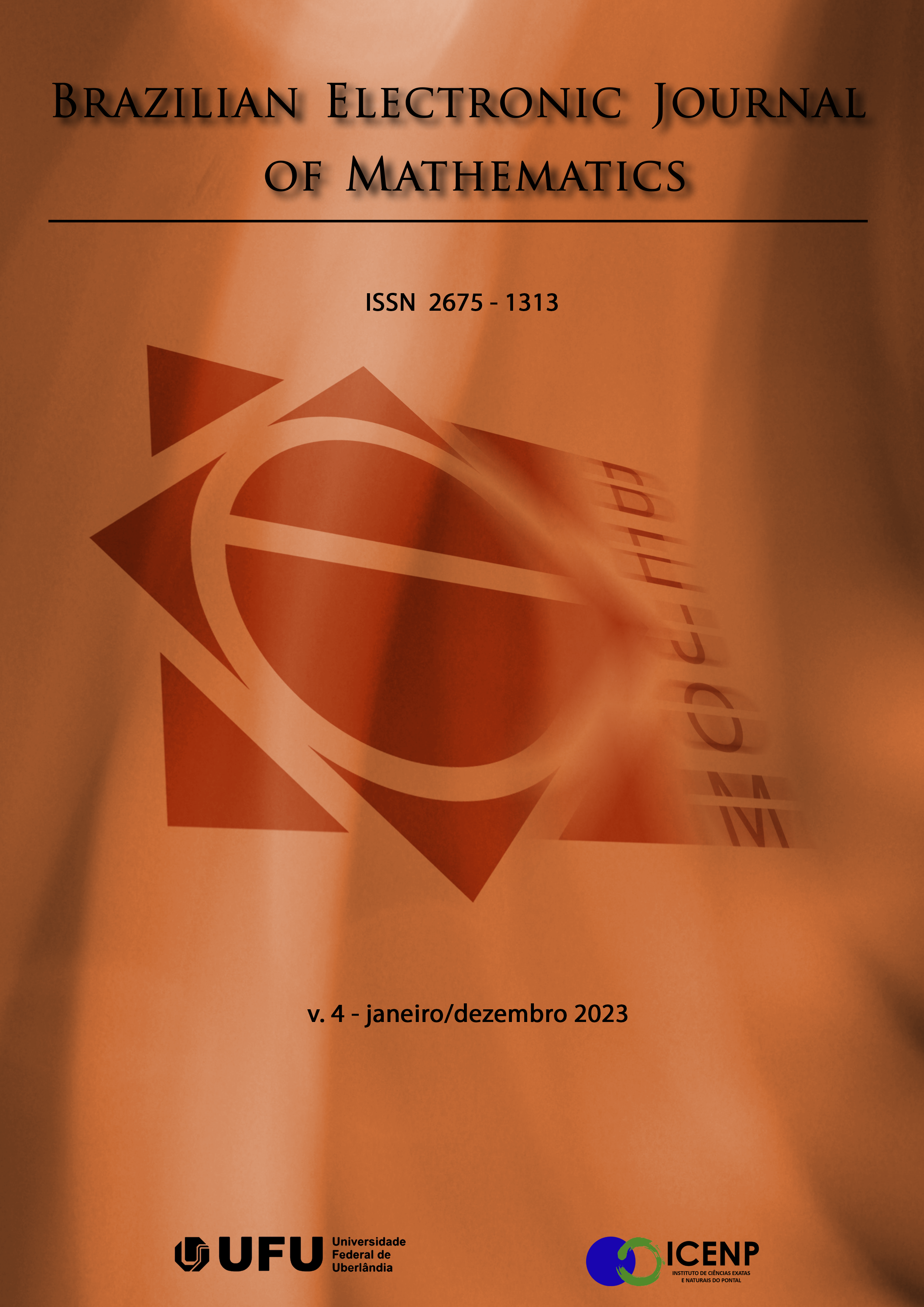Uma rede de registros dos métodos de resolução de equações do segundo grau para construção de vídeos no TikTok
DOI:
https://doi.org/10.14393/BEJOM-v4-2023-69692Palavras-chave:
Pibid, Ensino Fundamental, TikTok, Projetos CriadoresResumo
Esta pesquisa é parte de uma dissertação que abordou a autoria de licenciandosem Matemática na criação de vídeos no Pibid. O objetivo deste estudo foi destacar a relevância de uma organização em rede interconectada de registros de conteúdos matemáticos. Utilizando abordagem qualitativa e o método de estudo de casos, a autoria dos participantesdo Pibid no TikTok, especialmente em relação aos métodos de resolução de equações do segundo grau, foi analisada. Como resultado, desenvolveu-se um algoritmo computacional para publicação desses métodos, considerados como nós de registros do fazer matemático. Esses registros formaram uma microrrede em formato de “fractal”, oferecendo diversasabordagens para a resolução de equações do segundo grau. Conclui-se, portanto, que além das macrorredes de projetos criadores de conteúdos matemáticos em diferentes plataformas, é essencial criar microrredes que abordem o mesmo conteúdo matemático de maneiras distintas, considerando múltiplas representações de significado. Essas microrredes são compostas por nós de registros criados ao longo da história humana.
Downloads
Referências
BOGDAN, R. C.; BIKLEN, S. K. Características da investigação qualitativa. In: BOGDAN, R. C.; BIKLEN, S. K. Investigação qualitativa em educação: uma introdução à teoria e aos métodos. Porto: Editora Porto, 1994.
CAPES (Coordenação de Aperfeiçoamento de Pessoal de Nível Superior). Edital MEC/CAPES/FNDE. 2007. Disponível em: https://www.gov.br/capes/ pt-br/centrais-de-conteudo/edital-pibid-pdf. Acesso em: 04 jun. 2023.
CAPES (Coordenação de Aperfeiçoamento de Pessoal de Nível Superior). Chamada Pública Edital do Programa Institucional de Bolsa de Iniciação À Docência – Pibid. 2009. Disponível em: https://www.gov.br/capes/pt-br/ centrais-de-conteudo/edital02-pibid2009-pdf. Acesso em: 04 jun. 2023.
GATTI, B. A. et al. Um estudo avaliativo do Programa Institucional de Bolsa de Iniciação à Docência (Pibid). São Paulo: Fcc/Sep, 2014. 120 p. Disponível em: https://www2.unesp.br/portal#!/prograd/pibid18080/ publicacoes/avaliacao-pibid-ffc/. Acesso em: 04 jun. 2023.
GOMES, R. D. Performance da resolução de problemas no ensino de equação do 2o Grau, um estudo dos métodos de fatoração e do método de Po-Shen Loh. 2022. 174 f. Tese (Doutorado em Ensino de Ciências e Educação Matemática) - Universidade Estadual da Paraíba, Campina Grande, 2022. Disponível em: https://tede.bc.uepb.edu.br/jspui/handle/tede/4486. Acesso em: 04 jun. 2023.
LÉVY, P. As tecnologias da inteligência: o futuro do pensamento na era da informática. 15. ed. Rio de Janeiro: Editora34, 2008. 204 p.
LÜDKE, M.; DE ANDRÉ, M. E. D. A. Pesquisa em educação: abordagens qualitativas. 2. ed. São Paulo: EPU, 2018.
MARINA, J. A. Teoria da inteligência criadora.Tradução: Antonio Fernando Borges. Rio de Janeiro: Guarda-Chuva, 2009.
MEC (Ministério da Educação). Base Nacional Comum Curricular (BNCC). 2018. Disponível em: http://basenacionalcomum.mec.gov.br/. Acesso em: 04 jun. 2023.
DE SOUSA, M. A. O processo de constituição da inteligência criadora no PIBID do curso de licenciatura em matemática no contexto pandêmico. 2022. 118 f. Dissertação (Mestrado em Ensino de Ciências e Matemática) - Centro de Ciências Integradas, Universidade Federal do Norte do Tocantins, Araguaína, 2022.
YIN, R. K. Estudo de caso: planejamento e métodos. 5. ed. Porto Alegre: Bookman Editora Ltda, 2015.
Downloads
Publicado
Edição
Seção
Licença
Copyright (c) 2023 Deive Barbosa Alves, Douglas Silva Fonseca, Marcos Antônio de Sousa

Este trabalho está licenciado sob uma licença Creative Commons Attribution-NonCommercial 4.0 International License.
- Os artigos publicados a partir de 2025 são licenciados sob a versão CCBY-4.0. Ao enviar o material para publicação, os autores estarão automaticamente, concordando com as diretrizes editoriais do periódico e assumindo que o texto foi devidamente revisado. A submissão simultânea de artigos a outras revistas é proibida, e, é também proibida a tradução de artigos publicados no periódico para outro idioma sem a devida autorização.
- Os artigos publicados em anos anteriores a 2025 são licenciados sob a versão CC BY-NC 4.0.









